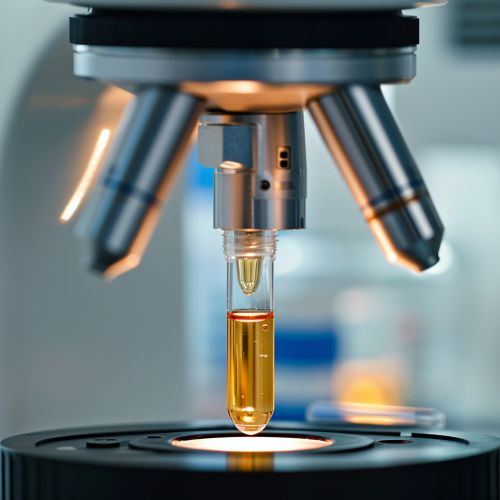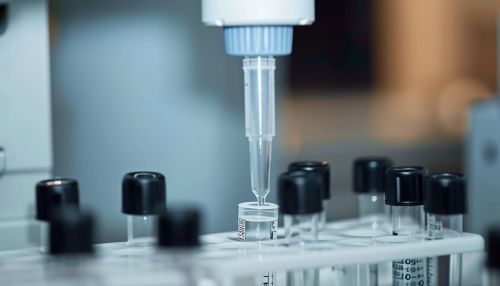NMR Spectroscopy
Introduction
Nuclear Magnetic Resonance (NMR) Spectroscopy is a powerful and theoretically complex analytical tool. NMR spectroscopy is used by chemists and biochemists to investigate the properties of organic molecules, although it is applicable to any kind of sample that contains nuclei possessing spin.


Basic Principles
NMR spectroscopy is based on the absorption of electromagnetic radiation in the radio frequency region, typically between 4 and 900 MHz. This absorption occurs when the nuclei of certain atoms are placed in a strong magnetic field and are then irradiated with radio waves. The most commonly studied nuclei are 1H and 13C.
NMR Spectrometer
The main components of an NMR spectrometer are the magnet, probe, RF transmitter, and detector. The magnet creates a strong magnetic field that aligns the spins of the nuclei. The probe contains the sample and is placed in the magnetic field. The RF transmitter irradiates the sample with radio waves, and the detector measures the absorption of the radio waves.
Chemical Shift
In NMR spectroscopy, the term "chemical shift" refers to the difference in resonance frequency of a nucleus in a sample compared to the resonance frequency of a standard reference compound. The chemical shift provides information about the electronic environment of the nucleus and is used to identify the type of atom and its chemical environment.
Spin-Spin Coupling
Spin-spin coupling, also known as J-coupling, is a phenomenon in NMR spectroscopy where the spin states of two or more nuclei are linked, leading to a splitting of the NMR signals. This splitting provides valuable information about the connectivity of atoms in a molecule.
Relaxation Processes
In NMR spectroscopy, relaxation is the process by which the spins of the nuclei return to their equilibrium state after being disturbed by the RF pulse. There are two main types of relaxation processes: spin-lattice relaxation (T1) and spin-spin relaxation (T2).
Applications
NMR spectroscopy has a wide range of applications in various fields such as chemistry, biochemistry, pharmaceutical industry, and medical diagnostics. It is used for the identification and quantification of organic compounds, determination of molecular structure, study of molecular dynamics, and non-invasive imaging of soft tissues in the human body (MRI).
